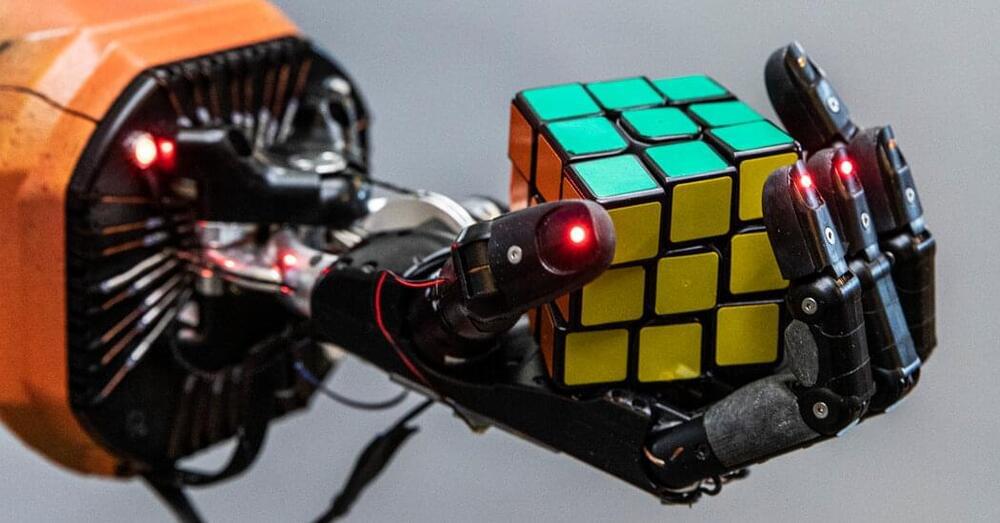TAE Technologies hopes to have a net energy producing fusion reactor operating on the UK grid by the 2030s.



The evolution of the human eye has long been considered one of biology’s more challenging mysteries, drawing debate over the sequence of steps required to turn rudimentary sensitivity to light into a complex photographic system.
New research suggests some components of vertebrate vision may not have been shaped incrementally as their genes passed down family lines, but were ‘stolen’ from entirely different branches of life.
“At least one innovation that led to the current structure of vertebrate eyes did not occur from stepwise “tinkering” with genes that exist in other animals, but came from introduction of novel DNA from bacteria by horizontal gene transfer,” explains molecular biologist Matt Daugherty from the University of California, San Diego (UCSD) on Twitter.
SpaceX is targeting as soon as Monday, April 17 at 8:00 a.m. CT for the first flight test of a fully integrated Starship and Super Heavy rocket from Starbase…
Recommended:
This is the first fully integrated full stack test flight of Starship and the mighty Super Heavy booster. At lift off, it will become the largest and most most powerful rocket to ever fly producing over twice as much thrust as the Saturn V that took humans to the moon.
The goal of the test is to get as far along in the mission as possible with a handful of important goals such as; clearing the launch pad, reaching max Q, getting to stage separation, ignition of Starship, burn Starship’s engines for 7 minutes and 20 seconds which would get Starship up to nearly orbital velocities and would place Starship on a suborbital trajectory that will cause it to reenter just north of Hawaii. This would allow the teams to test the reentry profile and heat shields for the first time from orbital velocities.
Want more information? Check out our Prelaunch Preview written by Austin Desisto — https://everydayastronaut.com/starship-superheavy-orbital-flight-test/
Want to know where to watch this live? I made a video on how to visit Starbase and where to watch a launch from — https://youtu.be/aWvHrih-Juk.

What does it mean to ask about the end of the universe? Can the universe even have an end? What would end? In the far, far future, what happens to stars, galaxies, and black holes? What about mass and energy, even space and time? What’s the ‘Big Crunch’ and the ‘Big Rip’? And what if there are multiple universes, will the multiverse ever end?
Free access to Closer to Truth’s library of 5,000 videos: http://bit.ly/376lkKN
Watch more interviews on the end of the universe: https://bit.ly/3MSHlFF
Support the show with Closer To Truth merchandise: https://bit.ly/3P2ogje.
Fred Adams is a professor of physics at the University of Michigan. His work is in the general area of theoretical astrophysics with a focus on the study of star formation and cosmology.
Register for free at CTT.com for subscriber-only exclusives: https://bit.ly/3He94Ns.

Among the many unique experiences of reporting on A.I. is this: In a young industry flooded with hype and money, person after person tells me that they are desperate to be regulated, even if it slows them down. In fact, especially if it slows them down.
What they tell me is obvious to anyone watching. Competition is forcing them to go too fast and cut too many corners. This technology is too important to be left to a race between Microsoft, Google, Meta and a few other firms. But no one company can slow down to a safe pace without risking irrelevancy. That’s where the government comes in — or so they hope.
A place to start is with the frameworks policymakers have already put forward to govern A.I. The two major proposals, at least in the West, are the “Blueprint for an A.I. Bill of Rights,” which the White House put forward in 2022, and the Artificial Intelligence Act, which the European Commission proposed in 2021. Then, last week, China released its latest regulatory approach.

Sources:
https://sites.google.com/view/sources-complement-system.
One of the key players of our immune system is the complement system. An army of millions and trillions of tiny bombs, which work together in a complex and elegant dance to stop intruders in your body.
OUR CHANNELS
▀▀▀▀▀▀▀▀▀▀▀▀▀▀▀▀▀▀▀▀▀▀▀▀▀▀
German Channel: https://kgs.link/youtubeDE
Spanish Channel: https://kgs.link/youtubeES
HOW CAN YOU SUPPORT US?
▀▀▀▀▀▀▀▀▀▀▀▀▀▀▀▀▀▀▀▀▀▀▀▀▀▀
This is how we make our living and it would be a pleasure if you support us!
Get Merch designed with ❤ from https://kgs.link/shop.
Join the Patreon Bird Army 🐧 https://kgs.link/patreon.
DISCUSSIONS & SOCIAL MEDIA
